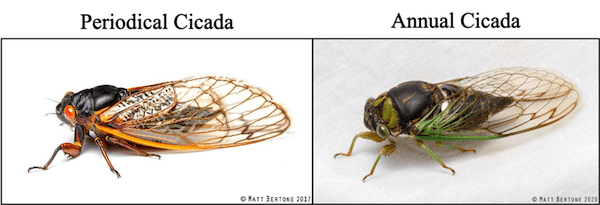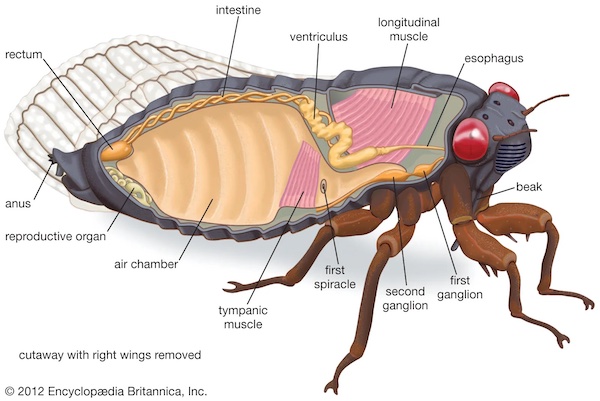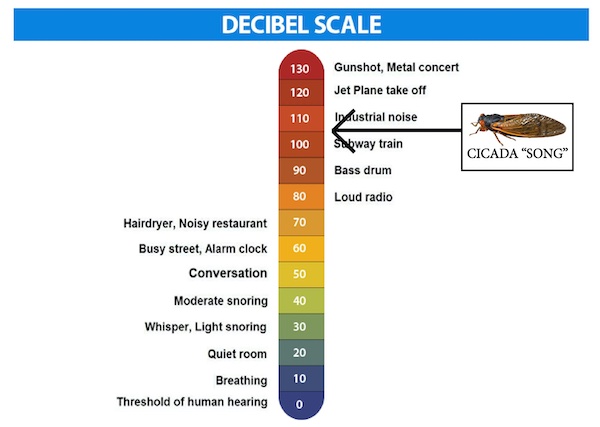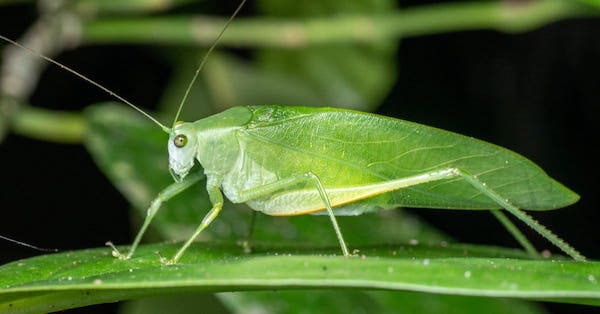The dog days of summer are now behind us but some of the sounds still linger in many parts of the country. One of the loudest is generated by ‘dog-day’ cicadas, also called ‘annual’ cicadas, that typically emerge every year from July to September. And every year, the fading sound of their buzzing signals cooler days ahead. Another loud little bug whose sounds gradually disappear with the warm weather is the katydid, which fills summer nights with its higher-pitched chirping. While both cicadas and katydids are in the same insect order, they are very different bugs that each have some pretty amazing capabilities. Below is some interesting info and fun trivia about these noisy critters that serenade us into autumn every year.
Day vs. Night – Cicadas are most easily distinguishable from katydids by what time of day you hear them. Cicadas are mostly active during the day while kaydids are nocturnal.
Annual Cicadasare called ‘dog-day’ cicadas because they typically emerge from the ground during the dog days of summer, which is the 40-day period between July 3 and Aug. 11. Dog-day cicadas are green or black in color, with black eyes and transparent wings. Cicadas are not considered a crop pest. In fact, they can be beneficial because their nymphs help aerate the soil.
The Cicada Sound – All cicadas produce sound by vibrating a membranous, drumhead-like organ on the sides of their abdomen called a tymbal. The tymbal has a series of ribs that can buckle onto one another when the cicada flexes its muscles. As each rib buckles, it creates a clicking noise, and the combined effect of the clicks is the buzzing sound we hear. The enlarged and mostly hollow abdomen of the cicada acts as an amplification chamber producing vibrations of more than 100 decibels, one of the loudest sounds in the animal world.
Katydidsare sometimes called ‘bush crickets,’ although they belong to a distinctly different insect family than crickets. There are actually over 8,000 known species of katydids, many of which are known for their camouflage abilities. Most have leaf-shaped wings and are a bright green color that easily blends in with foliage. When hatching from the egg, the Katydid looks much like an adult without wings. As it grows, they molt and gain wings becoming an adult. The lifespan of a katydid is about a year, though they can live up to two years in some tropical locations. Due to their habit of eating commercial crops, Katydids are often considered pests but rarely cause significant damage. Some katydids are actually carnivores, preying on other insects or snails.
The Katydids Sound – The rasping sounds created by the common true katydid (Pterophylla camellifolia), native to much of the eastern US, is said to resemble the sound of the words “Katy Did! Katy Didn’t! Katy Did! Katy Didn’t!”, hence the common name for these insects. Common folklore tells the tale of a lovely maiden named Katy who fell in love with a handsome man. However, the man fell in love with her sister. The pain of seeing them together was too much for Katy, and she killed them both in a fit of anger. No one believed that she was capable of such a crime, but the bugs turned against her and began a melodious sort of tattle-telling: “Katy did it! Katy did it!” Other stories depict the bugs as arguing with one another: “Katy did it! Katy didn’t!” The katydid’s musical anatomy includes a forewing with a series of teeth called the file and an opposing forewing with a scraper. When the file moves across the scraper, vibrations reverberate across the wing. The common true katydid creates an amplification chamber by bowing its forewings to help resonate its call, which can reach decibels of up to 110. Some species of katydids are even louder than some cicada species.
Signaling the First Frost – Some common old wives’ tales about both these noisy critters revolve around the seasons. One long repeated folk legend says when you hear the first song of the dog-day cicadas, it means there’s just six weeks until frost. Another is that the first frost will occur three months from the first katydid chirp. (Sources: National Geographic, Scientific American, Cicada Mania, Wiki)
Wave of Cicadas Coming in 2024 – In 2024, two groups of periodical cicadas—Brood XIII and Brood XIX—will emerge simultaneously for the first time in 221 years, an event rarer than Halley’s comet. Brood XIII has a 17-year life cycle and Brood XIX has a 13-year cycle.










